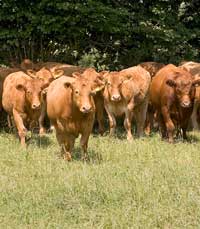Liver fluke still a threat

Liver fluke is still a threat to livestock despite the dry weather.
Fluke has already been found in livers of spring born lambs at abattoirs, so it’s vital beef and sheep producers are not lulled in to a false sense of security, says Novartis’ vet Saul Harvey.
Fluke may have traditionally been associated with the wet, but low rainfall and consequently slow grass growth means livestock have been grazing filed margins- – areas typically close to ditches and other watercourses or where soils are boggy.
Even in dry years, these areas will be an ideal habitat for snails and fluke, explains Mr Harvey. “Extremely high levels of fluke challenge from previous years means that not only are there high levels of cysts to infect livestock, but also that snails will be carrying plenty of infective larvae, which are just waiting for some rain in order to become active.”
Mr Harvey urged producers to, where possible, fence off marginal areas where there may be a greater fluke burden. “Monitoring livestock for fluke infestation is not easy. The first sign most sheep producers see that indicates a problem is dead stock – so don’t leave dosing too late.”
And he recommends sheep producers in areas where there has been a history of fluke disease to consider administering the first dose for liver fluke to ensure they eradicate all the early immature fluke worms.
“Autumn-calving dairy cows and beef cattle should be treated at drying-off with a product that removes all stages of this damaging parasite.
“It is important at this time to use a flukicide to kill all stages of fluke, particularly at housing. Using an adult fluke-only treatment will leave immature fluke behind to continue to cause liver damage, and that will lead to reduced productivity during the winter period,” said Mr. Harvey.
There are three stages of fluke development, with both the early immature and immature fluke attacking the liver and affecting milk yields and weight gains. In the third phase, the adult fluke reaches the bile duct and feeds on blood. This is what causes anemia and bottle jaw. This adult fluke also produces eggs, which are then shed on to the pasture to restart the cycle the following season.
